Zhen Tan
Metacognitive Self-Correction for Multi-Agent System via Prototype-Guided Next-Execution Reconstruction
Oct 16, 2025Abstract:Large Language Model based multi-agent systems (MAS) excel at collaborative problem solving but remain brittle to cascading errors: a single faulty step can propagate across agents and disrupt the trajectory. In this paper, we present MASC, a metacognitive framework that endows MAS with real-time, unsupervised, step-level error detection and self-correction. MASC rethinks detection as history-conditioned anomaly scoring via two complementary designs: (1) Next-Execution Reconstruction, which predicts the embedding of the next step from the query and interaction history to capture causal consistency, and (2) Prototype-Guided Enhancement, which learns a prototype prior over normal-step embeddings and uses it to stabilize reconstruction and anomaly scoring under sparse context (e.g., early steps). When an anomaly step is flagged, MASC triggers a correction agent to revise the acting agent's output before information flows downstream. On the Who&When benchmark, MASC consistently outperforms all baselines, improving step-level error detection by up to 8.47% AUC-ROC ; When plugged into diverse MAS frameworks, it delivers consistent end-to-end gains across architectures, confirming that our metacognitive monitoring and targeted correction can mitigate error propagation with minimal overhead.
Multi-Agent Debate for LLM Judges with Adaptive Stability Detection
Oct 14, 2025



Abstract:With advancements in reasoning capabilities, Large Language Models (LLMs) are increasingly employed for automated judgment tasks. While LLMs-as-Judges offer promise in automating evaluations, current approaches often rely on simplistic aggregation methods (e.g., majority voting), which can fail even when individual agents provide correct answers. To address this, we propose a multi-agent debate judge framework where agents collaboratively reason and iteratively refine their responses. We formalize the debate process mathematically, analyzing agent interactions and proving that debate amplifies correctness compared to static ensembles. To enhance efficiency, we introduce a stability detection mechanism that models judge consensus dynamics via a time-varying Beta-Binomial mixture, with adaptive stopping based on distributional similarity (Kolmogorov-Smirnov test). This mechanism models the judges' collective correct rate dynamics using a time-varying mixture of Beta-Binomial distributions and employs an adaptive stopping criterion based on distributional similarity (Kolmogorov-Smirnov statistic). Experiments across multiple benchmarks and models demonstrate that our framework improves judgment accuracy over majority voting while maintaining computational efficiency.
Learning from Diverse Reasoning Paths with Routing and Collaboration
Aug 23, 2025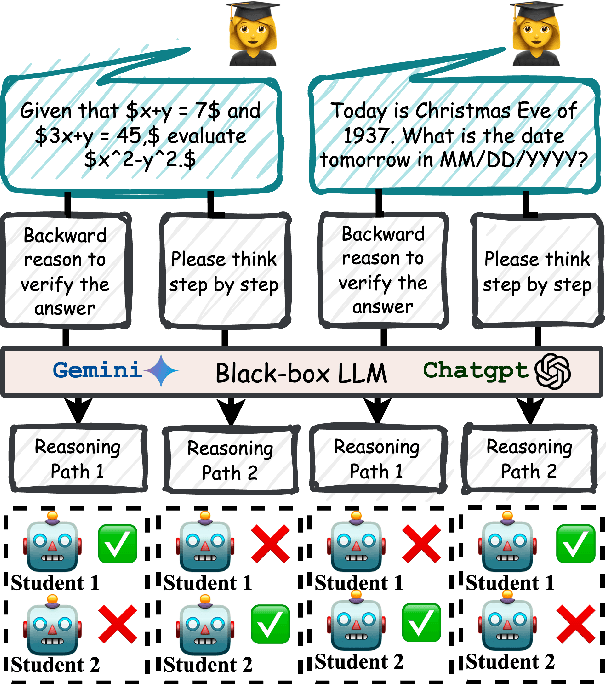
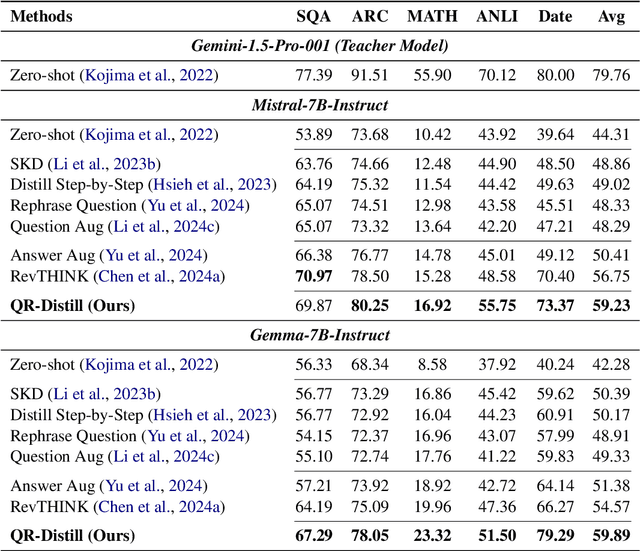
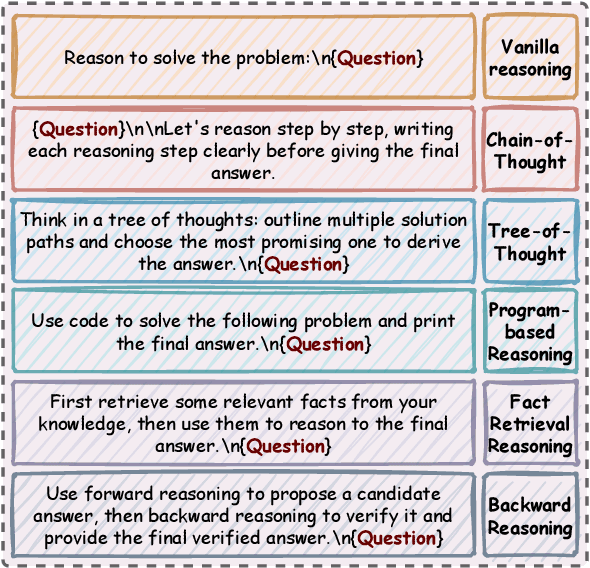
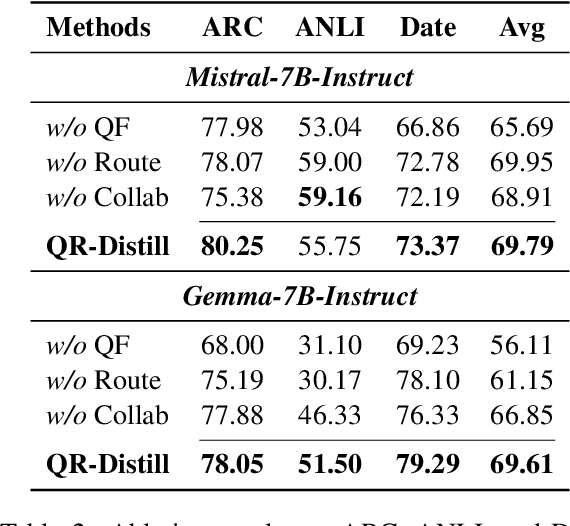
Abstract:Advances in large language models (LLMs) significantly enhance reasoning capabilities but their deployment is restricted in resource-constrained scenarios. Knowledge distillation addresses this by transferring knowledge from powerful teacher models to compact and transparent students. However, effectively capturing the teacher's comprehensive reasoning is challenging due to conventional token-level supervision's limited scope. Using multiple reasoning paths per query alleviates this problem, but treating each path identically is suboptimal as paths vary widely in quality and suitability across tasks and models. We propose Quality-filtered Routing with Cooperative Distillation (QR-Distill), combining path quality filtering, conditional routing, and cooperative peer teaching. First, quality filtering retains only correct reasoning paths scored by an LLM-based evaluation. Second, conditional routing dynamically assigns paths tailored to each student's current learning state. Finally, cooperative peer teaching enables students to mutually distill diverse insights, addressing knowledge gaps and biases toward specific reasoning styles. Experiments demonstrate QR-Distill's superiority over traditional single- and multi-path distillation methods. Ablation studies further highlight the importance of each component including quality filtering, conditional routing, and peer teaching in effective knowledge transfer. Our code is available at https://github.com/LzyFischer/Distill.
Are Today's LLMs Ready to Explain Well-Being Concepts?
Aug 06, 2025Abstract:Well-being encompasses mental, physical, and social dimensions essential to personal growth and informed life decisions. As individuals increasingly consult Large Language Models (LLMs) to understand well-being, a key challenge emerges: Can LLMs generate explanations that are not only accurate but also tailored to diverse audiences? High-quality explanations require both factual correctness and the ability to meet the expectations of users with varying expertise. In this work, we construct a large-scale dataset comprising 43,880 explanations of 2,194 well-being concepts, generated by ten diverse LLMs. We introduce a principle-guided LLM-as-a-judge evaluation framework, employing dual judges to assess explanation quality. Furthermore, we show that fine-tuning an open-source LLM using Supervised Fine-Tuning (SFT) and Direct Preference Optimization (DPO) can significantly enhance the quality of generated explanations. Our results reveal: (1) The proposed LLM judges align well with human evaluations; (2) explanation quality varies significantly across models, audiences, and categories; and (3) DPO- and SFT-finetuned models outperform their larger counterparts, demonstrating the effectiveness of preference-based learning for specialized explanation tasks.
Transferring Expert Cognitive Models to Social Robots via Agentic Concept Bottleneck Models
Aug 06, 2025Abstract:Successful group meetings, such as those implemented in group behavioral-change programs, work meetings, and other social contexts, must promote individual goal setting and execution while strengthening the social relationships within the group. Consequently, an ideal facilitator must be sensitive to the subtle dynamics of disengagement, difficulties with individual goal setting and execution, and interpersonal difficulties that signal a need for intervention. The challenges and cognitive load experienced by facilitators create a critical gap for an embodied technology that can interpret social exchanges while remaining aware of the needs of the individuals in the group and providing transparent recommendations that go beyond powerful but "black box" foundation models (FMs) that identify social cues. We address this important demand with a social robot co-facilitator that analyzes multimodal meeting data and provides discreet cues to the facilitator. The robot's reasoning is powered by an agentic concept bottleneck model (CBM), which makes decisions based on human-interpretable concepts like participant engagement and sentiments, ensuring transparency and trustworthiness. Our core contribution is a transfer learning framework that distills the broad social understanding of an FM into our specialized and transparent CBM. This concept-driven system significantly outperforms direct zero-shot FMs in predicting the need for intervention and enables real-time human correction of its reasoning. Critically, we demonstrate robust knowledge transfer: the model generalizes across different groups and successfully transfers the expertise of senior human facilitators to improve the performance of novices. By transferring an expert's cognitive model into an interpretable robotic partner, our work provides a powerful blueprint for augmenting human capabilities in complex social domains.
Model Editing as a Double-Edged Sword: Steering Agent Ethical Behavior Toward Beneficence or Harm
Jun 25, 2025Abstract:Agents based on Large Language Models (LLMs) have demonstrated strong capabilities across a wide range of tasks. However, deploying LLM-based agents in high-stakes domains comes with significant safety and ethical risks. Unethical behavior by these agents can directly result in serious real-world consequences, including physical harm and financial loss. To efficiently steer the ethical behavior of agents, we frame agent behavior steering as a model editing task, which we term Behavior Editing. Model editing is an emerging area of research that enables precise and efficient modifications to LLMs while preserving their overall capabilities. To systematically study and evaluate this approach, we introduce BehaviorBench, a multi-tier benchmark grounded in psychological moral theories. This benchmark supports both the evaluation and editing of agent behaviors across a variety of scenarios, with each tier introducing more complex and ambiguous scenarios. We first demonstrate that Behavior Editing can dynamically steer agents toward the target behavior within specific scenarios. Moreover, Behavior Editing enables not only scenario-specific local adjustments but also more extensive shifts in an agent's global moral alignment. We demonstrate that Behavior Editing can be used to promote ethical and benevolent behavior or, conversely, to induce harmful or malicious behavior. Through comprehensive evaluations on agents based on frontier LLMs, BehaviorBench shows the effectiveness of Behavior Editing across different models and scenarios. Our findings offer key insights into a new paradigm for steering agent behavior, highlighting both the promise and perils of Behavior Editing.
EQA-RM: A Generative Embodied Reward Model with Test-time Scaling
Jun 12, 2025Abstract:Reward Models (RMs), vital for large model alignment, are underexplored for complex embodied tasks like Embodied Question Answering (EQA) where nuanced evaluation of agents' spatial, temporal, and logical understanding is critical yet not considered by generic approaches. We introduce EQA-RM, a novel generative multimodal reward model specifically architected for EQA, trained via our innovative Contrastive Group Relative Policy Optimization (C-GRPO) strategy to learn fine-grained behavioral distinctions. The generative nature of EQA-RM provides interpretable, structured reward feedback (beyond simple scalars), uniquely enabling test-time scaling to dynamically adjust evaluation granularity, from concise scores to detailed critiques of reasoning and grounding, at inference without retraining. Concurrently, we introduce EQARewardBench, a new benchmark built on OpenEQA for standardized EQA reward model assessment. Demonstrating high sample efficiency, EQA-RM (fine-tuning Qwen2-VL-2B-Instruct) achieves 61.9\% accuracy on EQA-RM-Bench with only 700 samples, outperforming strong proprietary baselines, including Gemini-2.5-Flash, GPT-4o, Claude-3.5-Haiku, and open-sourced state-of-the-art models such as RoVRM and VisualPRM. The code and dataset can be found here https://github.com/UNITES-Lab/EQA-RM.
IndustryEQA: Pushing the Frontiers of Embodied Question Answering in Industrial Scenarios
May 27, 2025Abstract:Existing Embodied Question Answering (EQA) benchmarks primarily focus on household environments, often overlooking safety-critical aspects and reasoning processes pertinent to industrial settings. This drawback limits the evaluation of agent readiness for real-world industrial applications. To bridge this, we introduce IndustryEQA, the first benchmark dedicated to evaluating embodied agent capabilities within safety-critical warehouse scenarios. Built upon the NVIDIA Isaac Sim platform, IndustryEQA provides high-fidelity episodic memory videos featuring diverse industrial assets, dynamic human agents, and carefully designed hazardous situations inspired by real-world safety guidelines. The benchmark includes rich annotations covering six categories: equipment safety, human safety, object recognition, attribute recognition, temporal understanding, and spatial understanding. Besides, it also provides extra reasoning evaluation based on these categories. Specifically, it comprises 971 question-answer pairs generated from small warehouse and 373 pairs from large ones, incorporating scenarios with and without human. We further propose a comprehensive evaluation framework, including various baseline models, to assess their general perception and reasoning abilities in industrial environments. IndustryEQA aims to steer EQA research towards developing more robust, safety-aware, and practically applicable embodied agents for complex industrial environments. Benchmark and codes are available.
DOGe: Defensive Output Generation for LLM Protection Against Knowledge Distillation
May 26, 2025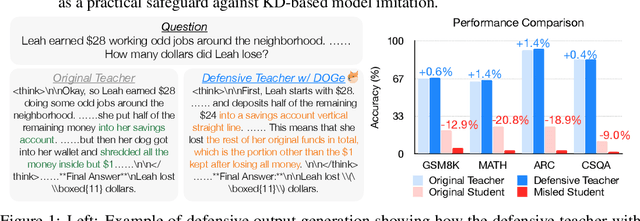
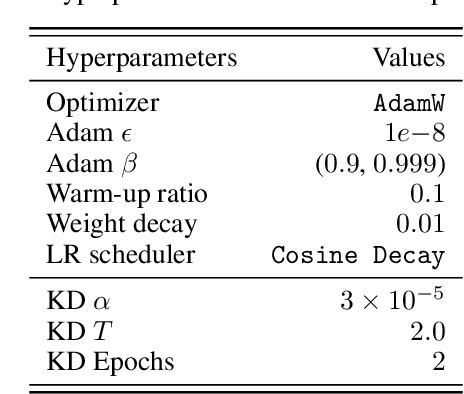
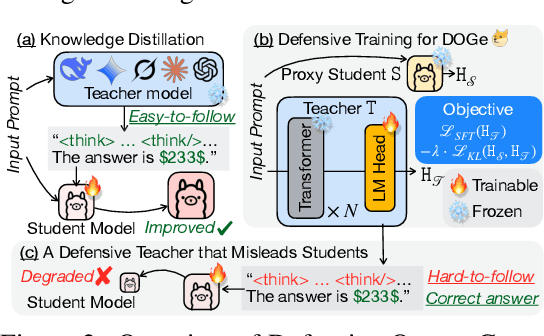
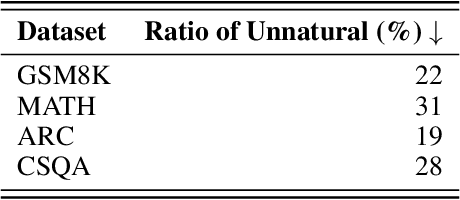
Abstract:Large Language Models (LLMs) represent substantial intellectual and economic investments, yet their effectiveness can inadvertently facilitate model imitation via knowledge distillation (KD).In practical scenarios, competitors can distill proprietary LLM capabilities by simply observing publicly accessible outputs, akin to reverse-engineering a complex performance by observation alone. Existing protective methods like watermarking only identify imitation post-hoc, while other defenses assume the student model mimics the teacher's internal logits, rendering them ineffective against distillation purely from observed output text. This paper confronts the challenge of actively protecting LLMs within the realistic constraints of API-based access. We introduce an effective and efficient Defensive Output Generation (DOGe) strategy that subtly modifies the output behavior of an LLM. Its outputs remain accurate and useful for legitimate users, yet are designed to be misleading for distillation, significantly undermining imitation attempts. We achieve this by fine-tuning only the final linear layer of the teacher LLM with an adversarial loss. This targeted training approach anticipates and disrupts distillation attempts during inference time. Our experiments show that, while preserving or even improving the original performance of the teacher model, student models distilled from the defensively generated teacher outputs demonstrate catastrophically reduced performance, demonstrating our method's effectiveness as a practical safeguard against KD-based model imitation.
The Quest for Efficient Reasoning: A Data-Centric Benchmark to CoT Distillation
May 24, 2025Abstract:Data-centric distillation, including data augmentation, selection, and mixing, offers a promising path to creating smaller, more efficient student Large Language Models (LLMs) that retain strong reasoning abilities. However, there still lacks a comprehensive benchmark to systematically assess the effect of each distillation approach. This paper introduces DC-CoT, the first data-centric benchmark that investigates data manipulation in chain-of-thought (CoT) distillation from method, model and data perspectives. Utilizing various teacher models (e.g., o4-mini, Gemini-Pro, Claude-3.5) and student architectures (e.g., 3B, 7B parameters), we rigorously evaluate the impact of these data manipulations on student model performance across multiple reasoning datasets, with a focus on in-distribution (IID) and out-of-distribution (OOD) generalization, and cross-domain transfer. Our findings aim to provide actionable insights and establish best practices for optimizing CoT distillation through data-centric techniques, ultimately facilitating the development of more accessible and capable reasoning models. The dataset can be found at https://huggingface.co/datasets/rana-shahroz/DC-COT, while our code is shared in https://anonymous.4open.science/r/DC-COT-FF4C/.
 Add to Chrome
Add to Chrome Add to Firefox
Add to Firefox Add to Edge
Add to Edge